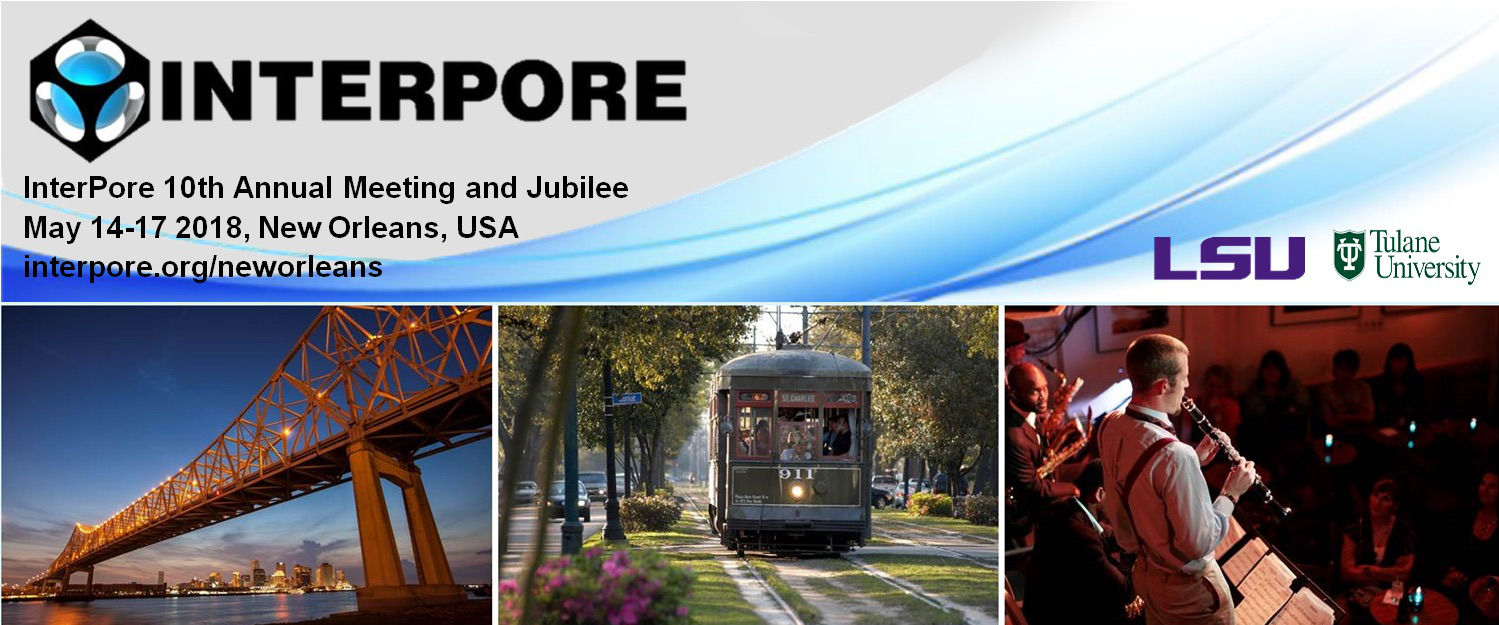Speaker
Description
The study of fluid-flow through porous materials is of high relevance in a wide variety of applications such as geothermal energy exploration and generation, CO2 sequestration and oil and gas reservoirs management. Physical experiments are not always convenient or even feasible, due to the nature of the materials. A suitable alternative is to realize Direct Numerical Simulations with micro-CT characterized porous materials geometries.
Often, the microstructure of porous media presents a very complex geometry. Moreover a complete study of fluid-flow through porous media, require simulations in a wide range of Reynolds numbers. The Smoothed Particle Hydrodynamics (SPH) method fits clearly to the desired applications. SPH is a meshless Lagrangian method; its meshless nature simplify the treatment of complex geometries because particles can be directly linked to the voxels, avoiding pre-processing steps for mesh-generation. Furthermore, the Lagrangian framework, facilitate the simulation of fluid-flows at high Reynolds numbers because non-linear convection terms do not need to be specifically treated. However, SPH as a particle technique requires high computational resources, especially for simulations of large domains.
To overcome these difficulties, we have extended the highly optimized HOOMD-blue to include the SPH method for quasi-incompressible single phase and two-phase fluid flow. HOOMD-Blue is a general purpose particles simulation tool-kit initially developed for molecular dynamics. The software was implemented for GPU parallelization and later on, MPI domain decomposition was included. Our SPH module targets both CPUs and GPUs.
We present initial scalability studies of the SPH module for quasi-incompressible single phase flow for a variety of representative test cases. The simulations are performed on the supercomputers Hazel Hen (HLRS – Germany) and Piz Daint (CSCS – Switzerland) for the CPU and GPU parallelization respectively.
We present additionally simulations of fluid flow in a large-scale high-resolution imaged real porous material at different Reynolds numbers, and estimate different effective transport properties of the material, such as permeability and tortuosity. We compare the computed effective properties, with the ones estimated with other more classical grid-based numerical methods.
Future work includes the implementation of additional models such as solid-solid and deformable solid-fluid interaction. Furthermore, we are aiming to improve the present SPH module with additional time integration methods.
References
Anderson, J.; Lorenz, C.; Travesset, A.. General purpose molecular dynamics simulations fully implemented on graphics processing units. Journal of Computational Physics, 2008, vol. 227, p. 5342-5359.
Glaser, J., et al. Strong scaling of general-purpose molecular dynamics simulations on GPUs. Computer Physics Communications, 2015, vol. 192, p. 97-107.
Sivanesapillai, R.; Steeb, H.; Hartmaier, A. Transition of effective hydraulic properties from low to high Reynolds number flow in porous media. Geophysical Research Letters, 2014, vol. 41, no 14, p. 4920-4928.
| Acceptance of Terms and Conditions | Click here to agree |
|---|


